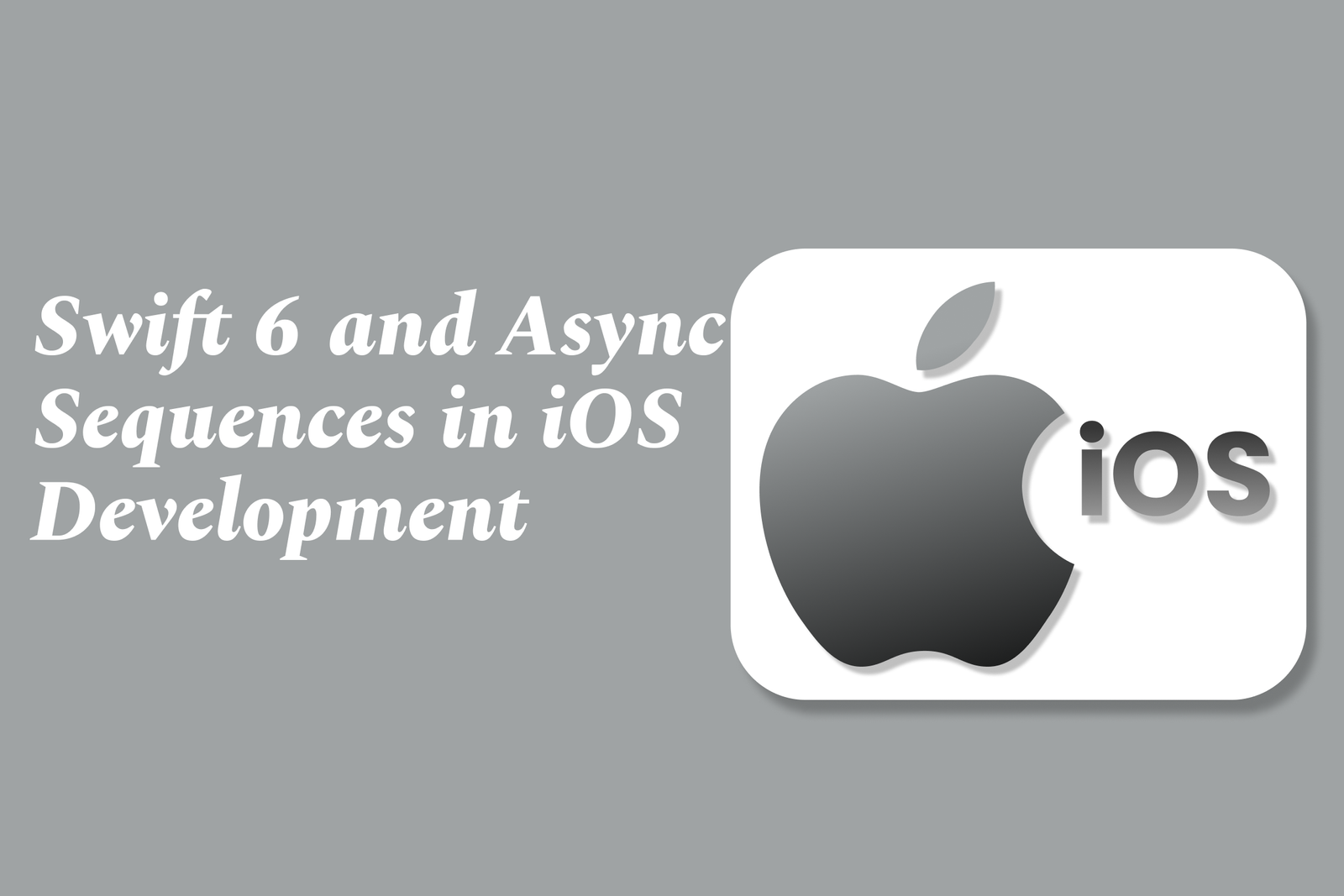Swift 6 and async sequences in iOS development
Swift 6 enhances iOS development by introducing stricter concurrency safety and powerful async features. Async Sequences simplify handling asynchronous data streams with clean, readable code, making it easier to manage events like networking or user input using Swift’s modern async/await syntax.
Swift 6 and Async Sequences in iOS Development
1 ) Introduction to Swift 6
Swift 6 is a major release expanding the language to more platforms beyond iOS.
Enhancements include better memory safety, expanded Linux and Windows support, new low level concurrency APIs, cross platform APIs like Swift Testing library, and embedding subsets of Swift.
Swift is becoming increasingly suitable not only for apps but also for libraries, internet scale services, and performance critical code.
2 ) Concurrency Improvements in Swift 6
Swift 6 introduces an opt in language mode enforcing strict data race safety, now surfaced as compiler errors rather than warnings.
Improved compiler analysis reduces false positives in detecting data races.
New synchronization library provides low level concurrency tools such as atomic operations and mutexes.
These changes make concurrent programming safer and help developers catch potential issues early.
3 ) Typed Throws Feature
Functions can now declare the specific error type they throw in the signature, enhancing error handling precision.
This is particularly helpful in generic code and in constrained environments like embedded systems.
Typed throws generalizes throwing behavior and allows propagating error types in generic functions, improving both safety and code clarity.
4 ) Ownership Model Enhancements
Swift 6 extends support for non copyable types (~Copyable) into generics, enabling better resource management and performance optimizations.
This empowers developers to write generic code handling copyable and non copyable types uniformly, aiding unique ownership and reducing runtime overhead.
5 ) AsyncSequence Protocol and AsyncStream
AsyncSequence is the asynchronous counterpart to Swift’s Sequence protocol, allowing elements to arrive over time and be iterated asynchronously using `for await` loops.
Creating custom AsyncSequences can be complex, but the AsyncStream type simplifies defining asynchronous streams to adapt callback or delegation APIs to async/await.
AsyncStream allows yielding values asynchronously and handling cancellation effortlessly, integrating naturally with Swift Concurrency.
6 ) Practical Use Cases and Migration Advice
Async sequences facilitate handling asynchronous events like networking, timers, or streams of data in a concise and readable manner.
Although existing concurrency and async/await features exist, Swift 6’s improvements make full concurrency checks the default, making migration essential for future proofing codebases.
Developers are advised to enable Swift 6’s concurrency features progressively or use feature flags to ease migration.
Swift 6 sets the stage for improved safety, performance, and concurrency in iOS and other platforms.
7 ) Swift 6 vs Combine Framework
Swift’s async/await and AsyncSequence aim to gradually replace some Combine use cases, especially networking.
Combine remains valuable for reactive programming scenarios like observing property changes or user input.
Async sequences offer simpler, more natural async event handling where applicable but Combine will coexist for the foreseeable future.
Summary
Swift 6 marks a pivotal step in enhancing Swift’s concurrency capabilities with strict data race safety, improved error handling via typed throws, and better ownership models. Its support for AsyncSequence and AsyncStream simplifies asynchronous programming, making it easier to handle async events and streams with modern syntax. The language advances require mindful migration but promise safer, high performance, and more scalable iOS and cross platform development.
https://justacademy.in/news-detail/swiftui-charts-framework:-what?s-new-in-2025
https://justacademy.in/news-detail/why-react-native-is-still-the-fastest-way-to-build-apps
https://justacademy.in/news-detail/how-react-native-is-helping-build-inclusive-apps
https://justacademy.in/news-detail/react-native-and-expo:-the-dynamic-duo-of-mobile-development
https://justacademy.in/news-detail/the-rise-of-react-native-in-augmented-reality-apps
Related Posts
In 2025, top Angular libraries offer modern, feature-rich components and tools for building dynamic web apps. From powerful data grids to low-code platforms like UI Bakery, these libraries enhance development speed, UI design, and scalability, making them essential for Angular developers.
Migrating from AngularJS to Angular 17 involves gradually upgrading your app by running both frameworks together using tools like ngUpgrade, rewriting components in TypeScript, and adopting Angular’s modern architecture to enhance performance, maintainability, and long-term support.
Angular state management tools help organize and handle app data efficiently, improving scalability and maintainability. Popular options include NgRx for robust, RxJS-based patterns, and newer Signal Store solutions that offer simpler, reactive approaches integrated tightly with Angular’s latest features.
RxJS in Angular empowers developers to manage asynchronous data streams with powerful operators like `forkJoin`, `combineLatest`, and `zip`. Mastering these key operators in 2025 is essential for building efficient, reactive applications that handle complex event sequences seamlessly.
Angular performance optimization in 2025 focuses on improving app speed and responsiveness by using techniques like OnPush change detection, lazy loading, efficient data caching, and AOT compilation. These practices reduce load times, enhance user experience, and ensure scalable, fast Angular applications.
In 2025, Angular remains preferred for large-scale, enterprise apps with its robust, all-in-one framework, while Vue attracts developers seeking simplicity and fast development for smaller projects. Both frameworks excel, with choice driven by project needs and team expertise.
Angular Signals are a new reactive primitive in Angular 16 that enable fine-grained, efficient change detection by automatically tracking dependencies and updating only affected parts of the UI. They simplify state management and boost app performance, revolutionizing Angular's reactivity model.
Angular interview questions to prepare in 2025 focus on core concepts like components, directives, data binding, routing, and dependency injection, along with TypeScript mastery and latest Angular features to ensure strong practical knowledge for building scalable, efficient web applications.
AngularJS reached its official end of support in January 2022, meaning no further updates or security patches. To ensure app security and performance, developers should consider migrating to modern Angular versions or seek third-party long-term support options if immediate migration isn’t possible.
The Angular Roadmap 2025 highlights upcoming features focused on improving developer experience and performance, including zoneless Angular, Signals integration, enhanced Forms, async data handling, improved HMR, and expanded Angular Material/CDK enhancements, driving modern, efficient web app development.










